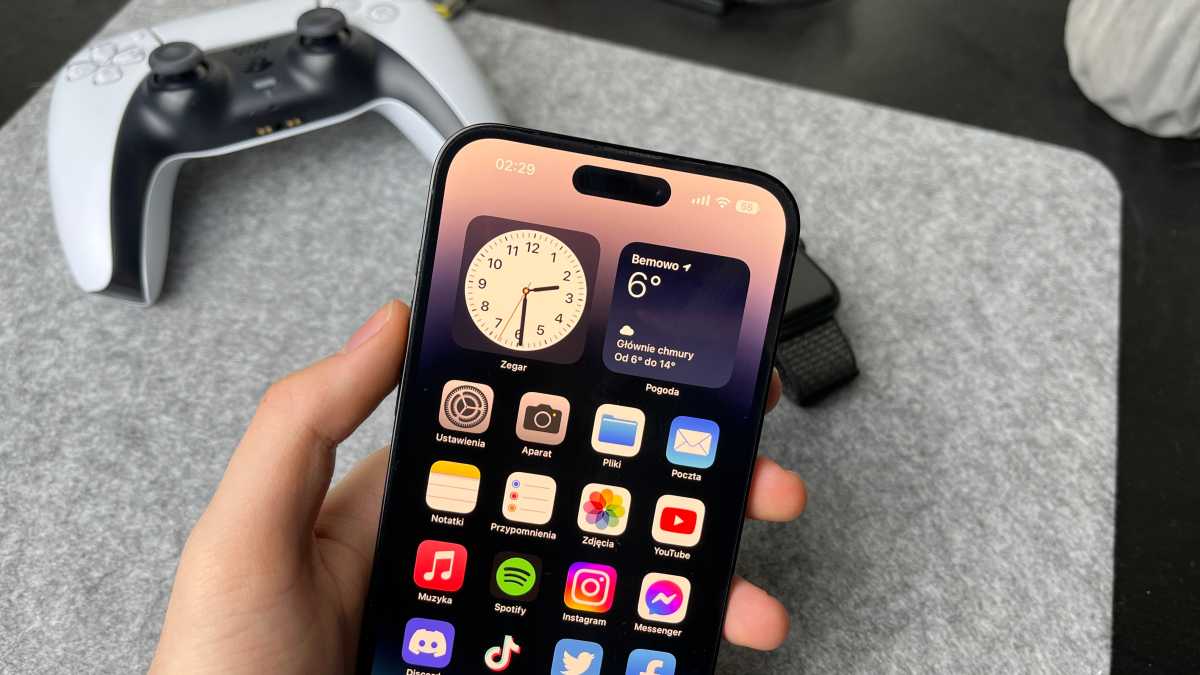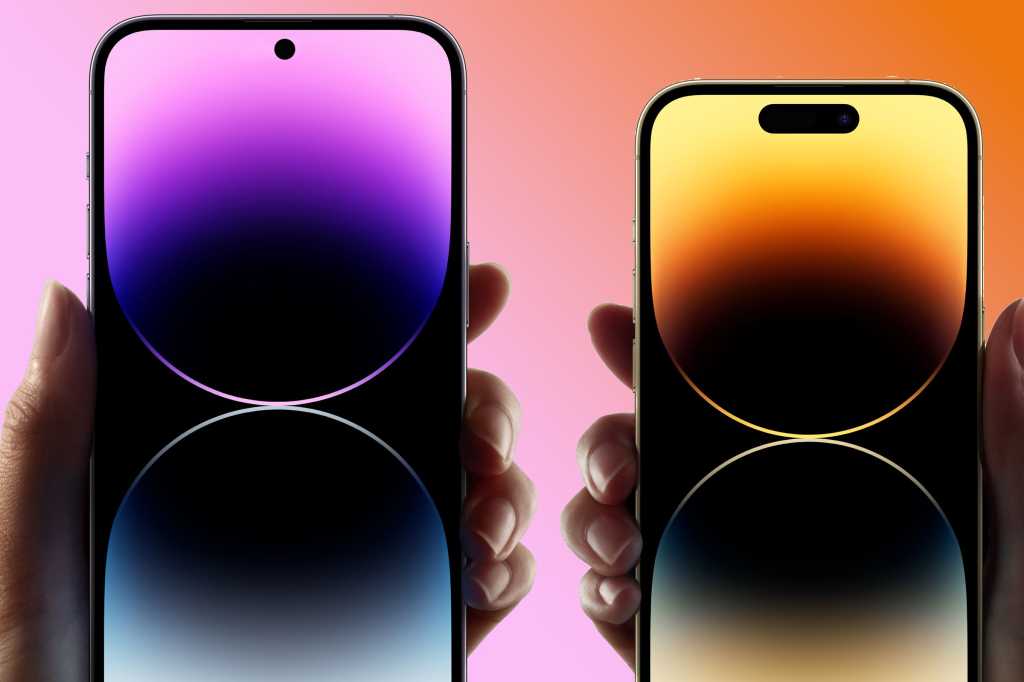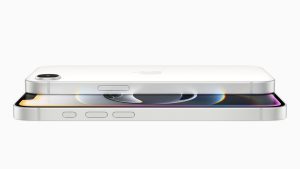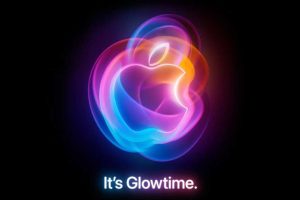
Now that the iPhone 15 lineup is on shelves, and now we can officially start thinking about the iPhone 16. Naturally, any rumors or leaks you see this early are going to be fluid at best–even if they are accurate now, plans can and do change and there’s still plenty of time to do so before the iPhone 16 enters production.
With all that said, here’s what the most prolific leakers and tipsters say we can expect about the iPhones coming in the fall of 2024.
Update June 28: A new report from The Information says that Apple is expected to debut a new, easier-to-replace battery in the iPhone 16.
When is the newest iPhone coming out?
The iPhone lineup is always announced at an event in September and usually ships a week or two later. There have been times when a particular model or variant will ship in October because of supply chain shortages, however.
The typical day for the iPhone and Apple Watch event is the second Tuesday in September, which this year is September 12. So we can expect the iPhone 16 line to be announced on Tuesday, September 10, 2024, with preorders starting likely on Friday, September 13, and at least some models shipping on September 20.
iPhone 16 price
For reference, the most recent iPhone lineup (iPhone 15) is priced as follows:
- iPhone 15: $799/£749
- iPhone 15 Plus: $899/£899
- iPhone 15 Pro: $999/£999
- iPhone 15 Pro Max: $1,199/£1,199
There’s no new information about the pricing of the iPhone 16 line, so it makes the most sense to assume it will cost the same as the iPhone 15 line, at least until we hear otherwise. That means the standard size iPhone 16 for $799 and the larger Plus model for $899, while the iPhone 16 Pro may cost $1,099 and the iPhone 16 Pro Max might go for $1,199. There are also some reports that say Apple will introduce a higher-end Ultra model with a larger screen than the Pro Max, which would obviously have a higher price tag.

The iPhone 16 may have a smaller Dynamic Island.

The iPhone 16 may have a smaller Dynamic Island.
Artur Tomala / Foundry

The iPhone 16 may have a smaller Dynamic Island.
Artur Tomala / Foundry
Artur Tomala / Foundry
iPhone 16 colors
When Apple launched the iPhone 15, it introduced an entirely new color palette. The iPhone 15 and 15 Plus come in familiar Black, Blue, Green, Yellow, and Pink options, but with much more muted hues than their predecessors. The only rumor we’ve heard about iPhone 16 colors concerns the iPhone 16 Plus, though we expect its smaller sibling to have the same colors. It says it will be available in the same five colors as the iPhone 15, with the addition of White and Purple.
For the iPhone 15 Pro and Pro Max, Apple uses four titanium-inspired colors: Black Titanium, White Titanium, Blue Titanium, and Natural Titanium. For 2024, Apple is rumored to introduce two new colors—Desert Yellow and Cement Gray—that will more closely resemble the space gray and gold colors of old.
iPhone 16 features
Design and display
There are few details about the iPhone 16 lineup so far, except that it should look, well, like an iPhone. The entire iPhone 15 line now has the Dynamic Island, so expect that pill-shaped cutout on the iPhone 16 models as well. Some rumors say Apple has found a way to put some of the Face ID sensors under the display, so the iPhone 16 Pro models could have an even smaller camera cutout than the standard models.
Ming-Chi Kuo and Ross Young both report that the display size on the Pro models will be getting bigger–about 0.2 inches measured diagonally–with a slightly taller aspect ratio. That means the iPhone 16 Pro will have a 6.27-inch display and the Pro Max a 6.86-inch display (up from 6.12 and 6.69 inches). The larger size is reportedly necessary to accommodate more sophisticated camera hardware but will also add a bit of screen real estate. A later report about the iPhone 16 display supply chain corroborated the notion of an iPhone 16 (at least some models) with slimmer bezels. A mock-up by ZoneOfTech shows that the iPhone 16 Pro Max could be bigger than the iPhone 15 Pro Max. ZonOfTech doesn’t state how it got the dimensions and specifications used to create the mock-up.
If you were hoping to get an always-on display without buying an iPhone 16 Pro or Pro Max, you’re probably out of luck. According to a report in The Elec, Apple will stick with standard OLED screens for the iPhone 16 rather than the LPTO screens in the Pro models so they won’t support ProMotion or always-on. However, the iPhone 17 will reportedly get the higher-end sceens.
On the back of the iPhones, you should also expect to see a larger camera array on the iPhone 16 Pro models due to the inclusion of a periscope super-zoom telephoto lens on both models and other new camera tech. However, the iPhone 16 and 16 Plus are rumored to be getting a smaller camera array with a pair of vertically aligned cameras like the iPhone X.
New to the iPhone 16 lineup will be a Capture Button, according to several reports. It will be on the same side as the power button, located lower, so it can be activated with the index finger of your right hand when holding the phone in landscape orientation. It will be touch and pressure-sensitive, allowing users to zoom in by swiping and to adjust focus with a soft press while triggering the shutter with a full press.
The iPhone 15 Pro models were originally expected to introduce new solid-state buttons, but more recent rumors suggest they simply won’t be ready in time and will appear on the iPhone 16 Pro instead. Regardless, all iPhone 15 Pro models are expected to feature an Action button in place of the mute switch, which should expand to the entire iPhone 16 lineup in 2024.
Specs and features
With each new iPhone comes a new A-series processor, and you can bet the trend will continue next year. The iPhone 16 Pro will therefore likely feature the A18 Pro processor, while the non-Pro iPhone 16 models could adopt a cut-down version of the A17 Pro that debuted in the iPhone 15 Pro, although recent rumors have suggested Apple will rebrand that chip as an A18. It is far too early to speculate about next year’s chip’s features and performance, but it’s unlikely that next year’s non-Pro iPhones will have the same Pro chip as this year. A rumor in March 2024 claimed the A18 Pro chip would be physically larger, with more area dedicated to an improved Neural Engine with the performance to support more “edge AI” features (AI features that run on device rather than in the cloud).
The battery capacities of the iPhone 16 lineup are reportedly very similar to that of the iPhone 15 line, with some models as much as 5% higher and the iPhone 16 Plus an outlier with 9% less capacity. Battery life is a factor of many components, though, so it’s unclear if you’ll get better battery life out of the iPhone 16 or not.
A report on 9to5Mac infers from part of an unrelated supplier report by Ming-Chi Kuo that Apple will be using Sony’s new stacked CMOS image sensor technology in the iPhone 16 Pro models next year, which should mean sensors with greatly increased low-light sensitivity. Additionally, Kuo reported in September 2023 that the smaller iPhone 16 Pro will gain the iPhone 15 Pro Max’s periscope camera.
A report from MacRumors cites a “Weibo account with a proven track record for disclosing accurate information about Apple’s plans” in saying that the iPhone 16 Ultra (or whatever the high-end model is called) could take spatial photos and videos meant for viewing on the Apple Vision Pro. Apple already introduced the ability to record spatial videos on the iPhone 15 Pro so it makes sense that Apple will expand this feature to photos on the iPhone 16 Pro.
Apple has been hard at work on its own wireless chips for years, and even Qualcomm’s CEO expects Apple to use its own 5G modems starting in 2024. Obviously, this is contingent on continued successful development and testing, which has been a challenge for Apple and every other company trying to make top-tier 5G technology. A report by Jeff Pu of Haitong International Securities in October 2023 claimed that the iPhone 16 will use Qualcomm’s Snapdragon X75 5G modem, which delivers “better speeds, coverage, mobility, link robustness and location accuracy.”
In addition, Pu reports that we can expect Wi-Fi 7 in the iPhone 16 Pro models. Wi-Fi 6E only arrived in the Pro models this year, so it’s possible Apple uses it for another year, but there are already a dozen Android phones with Wi-Fi 7 and it would be unusual for Apple to be two years behind if it had to wait until the iPhone 17 in 2025.
As far as other specs, Pu reports that the non-Pro iPhone 16 will bring a bump in RAM (8GB vs 6GB) and WiFi speeds (6E vs 6) to match the iPhone 15 Pro models.
Naturally, the iPhone 16 line will feature USB-C instead of Lightning for charging and wired connectivity. That change already came with the iPhone 15 and Apple isn’t about to backtrack. Prior rumors about Apple attempting to make a completely port-free iPhone seem to have fizzled out.
A rumor in November 2023 claimed that the iPhone 16 Pro will have a new battery design with a metal casing instead of black foil, a new connector, and a slightly larger capacity (3,355mAh vs 3,274mAh). The iPhone 16 and iPhone 16 Pro Max are also rumored to get larger batteries—3,561mAh and 4,676mAh, respectively—while the iPhone 16 Plus could see a dip to 4,006mAh.
This new battery is expected to be somewhat easier to replace in order to better comply with a new EU regulation, according to The Information. Users would still need to open up their iPhones, which is not exactly easy or fast, but once that is done you shouldn’t have to wrestle with adhesive strips.




